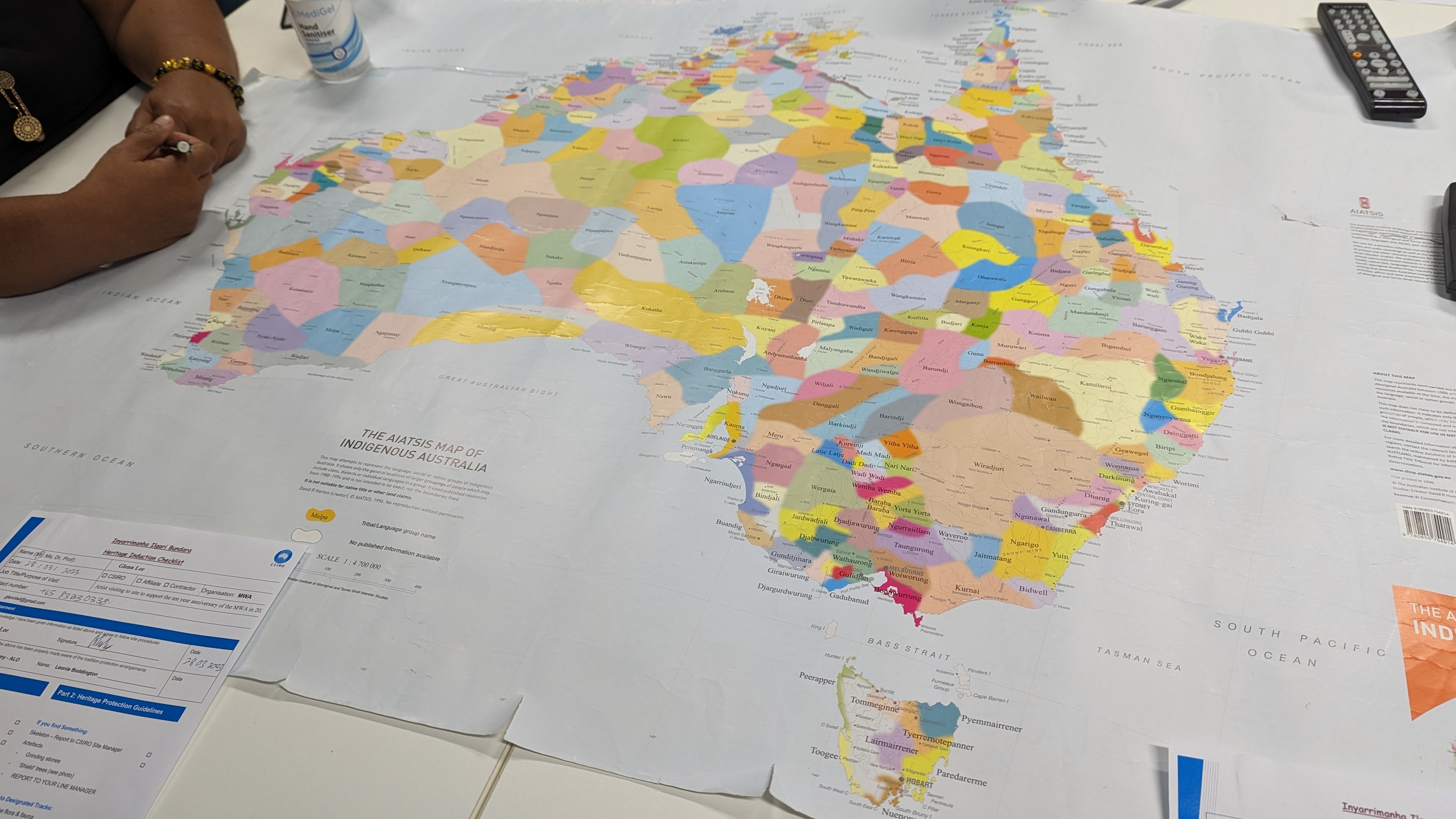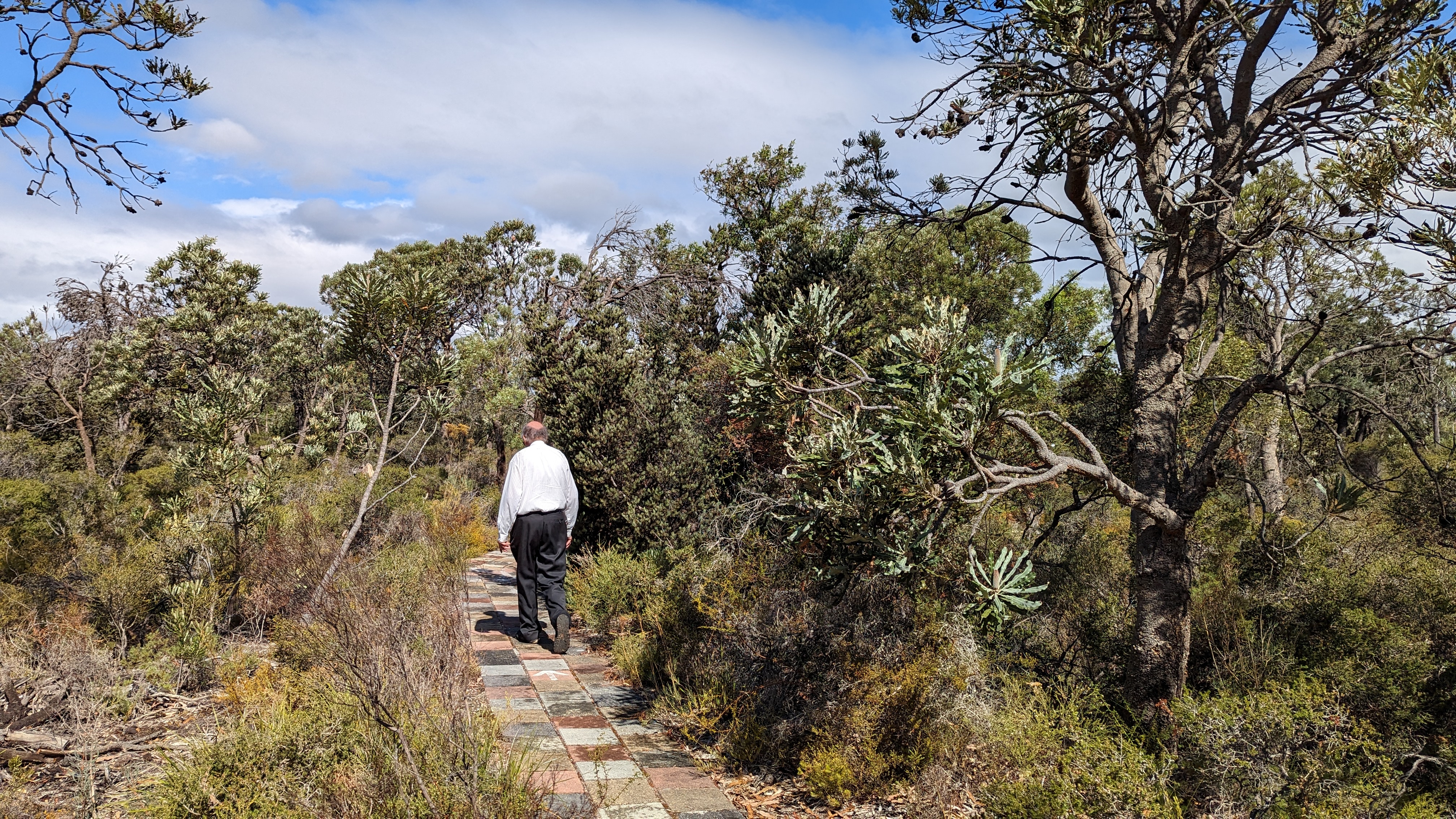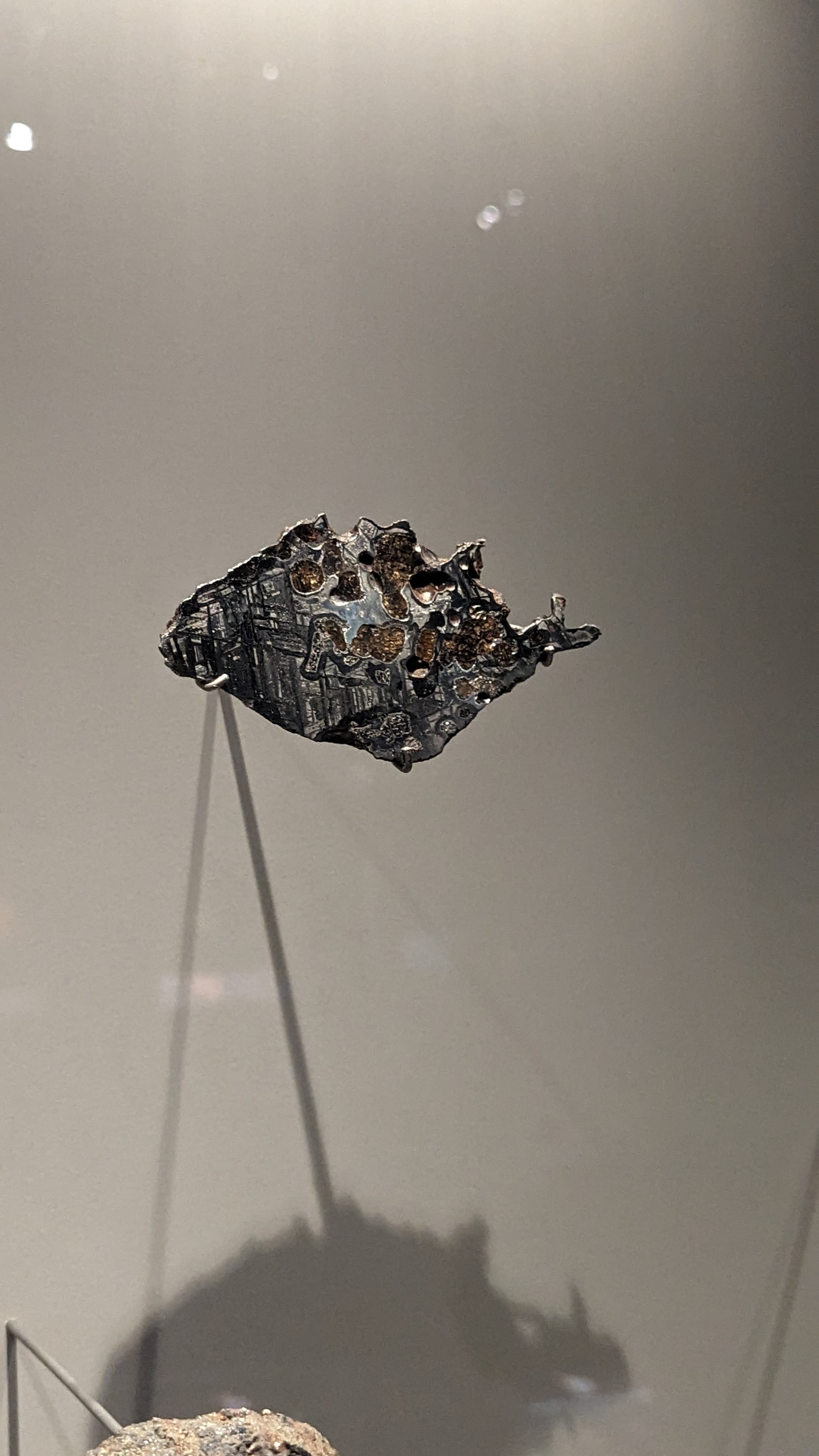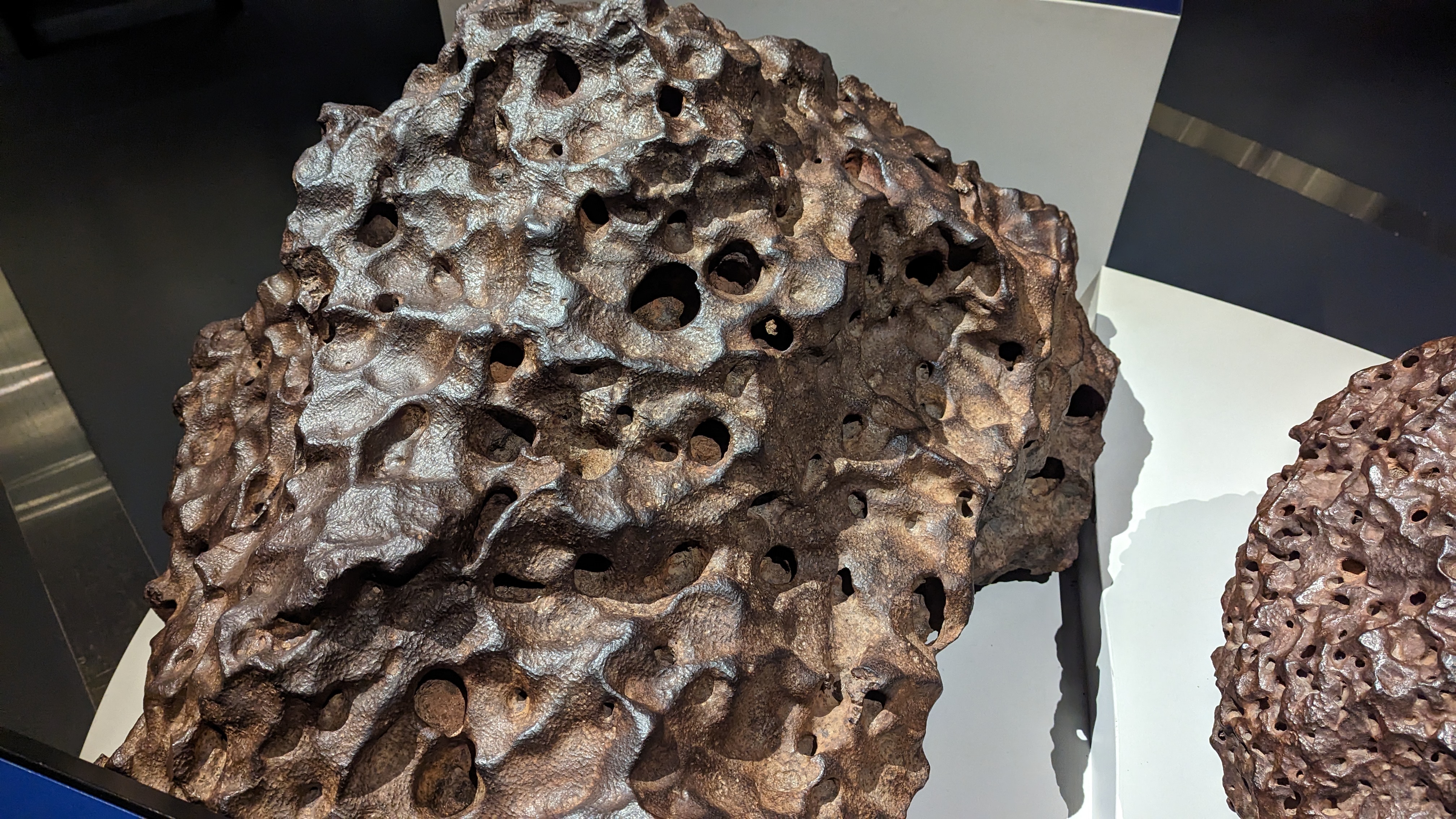WA Field Notes
Published on
21/06/2023
21/06/2023
Written by
ISABELLA ONG
ISABELLA ONG
Location:
Western Australia
Western Australia
Period:
27 March – 31 March; 12 April 2023
27 March – 31 March; 12 April 2023
27 MARCH: PERTH TO JURIEN BAY
3-hour car journey from Perth to Jurien Bay.
Overnight stay at Jurien Bay Motel.
28 MARCH: GERALDTON
In the morning, I received a call from Mia Walker (Project Officer at CIRA) about a possible thunderstorm in Murchison. There was a high chance that the trip up to the Murchison Widefield Array (MWA) would be cancelled as the roads would not be accessible during bad weather. I remained hopeful that the weather would change for the better.
Drove up from Jurien Bay to Geraldton. Spent the 2-hour car ride checking the Murchison weather forecast.


Stopped by the Pinnacles Desert on the way to Jurien Bay.
I met Dr Steven Tingay (astrophysicist, Executive Director of CIRA) and Mia at Salt Dish in Geraldton for lunch.
Steven connected me with the Yamaji Art Centre, whom he has been working closely with as the MWA is situated on their traditional lands. We met with Ronnie, a member of the Wajarri community, to talk about the debris project. In his explanation of the space debris problem, Steven described space as “the final frontier for us to pollute”—I love this sentiment.
During our conversations, I learned about their indigenous sky stories, like the Emu in the Sky and Seven Sisters. She talked about songlines, where the national stories are somewhat similar but branch out to have variations for the different countries1. She also mentioned that many indigenous tales are cautionary tales.
 Artwork by a Yamaji artist depicting the Seven Sisters constellation.
Artwork by a Yamaji artist depicting the Seven Sisters constellation.Spent the afternoon at CSIRO for the face-to-face inductions; Cultural Heritage induction with Leonie Boddington, Aboriginal Liason Officer; Health, Safety and Environment induction with Wilfredo Pena, HSE Advisor. Leonie showed us the language map of Indigenous Australia with the different countries (they were so many). She explained how CSIRO worked with the Wajarri elders, walking around the land and marking out the sacred sites, before they laid the groundwork for the MWA. With the MWA being in Murchison, she remarked, it is a site where the newest technology meets the oldest living culture2.
She mentioned that the ‘big rain’ was coming soon—how they have been preparing for the rains as that is when the rivers and pools would fill, allowing them to hunt for food. She shared about Bush Tuck; the goannas (lizards) and their meat; the edible gum from bimba trees which is sweet to the taste and is a remedy for constipation.
Seeing Leonie’s excitement about the rain, I knew that the thunderstorm was imminent and that our trip out to the Murchison was definitely off. At the same time, I was glad that the rain was something that the Wajarri people looked forward to every season. At least the rain was a reason for someone to be out there in the desert.

 Leonie showing us the map of Indigenous Australia.
Leonie showing us the map of Indigenous Australia.Had drinks with Steven and Mia at Old Man and the Sea, a rooftop bar with views of the ocean. During our conversations, I mentioned how it seemed that uncertainty is inherent in the space debris problem—in its analysis, study and even the language used to talk about it. He was glad that we picked up on this point. To him, scientists are always working in the realm of uncertainty but are expected to express their findings in exactitude and precision.
29 MARCH: GERALDTON
Spent the morning at the Yamaji Art Centre. We viewed the VR trailer for Star Dreaming, a film which explored indigenous sky stories, as seen through the eyes of Yamaji artists and explain the science behind them with the assistance of the world’s largest radio telescope—the Square Kilometer Array (SKA)3.
I was introduced to Dr Charmaine Green (visual artist, poet, writer), a multi-hyphenated member of the Wajarri community. Speaking about the project, she described the ‘upside down’ rivers they have in the Murchison—where the water runs hidden below the arid, desert surface—and how space debris orbiting Earth reminds her of those rivers. Just like how most people would not know that water is present underground unless they know where to look, we on Earth cannot see space debris unless we know what we are looking for—a blindness due to ignorance.
The conversation turned to the indigenous sky stories that we learned the day before—the Emu in the Sky and Seven Sisters. I told her I could not find many books on their sky stories in the indigenous section of the bookshop, even though they feature so prominently in their culture. According to her, many of these stories are sacred and can only be shared amongst members of their country; some stories can only be passed on to the elders in the community. This made me realise that, as we gather up sky stories from different cultures, I might not have the right to disseminate them; they are not my stories to tell. How can this project present the sky stories in a respectful manner?
We had dinner and drinks with Steven at The Provincial after. We spoke of the possibility of a follow-up trip, part of an artist residency attached with CIRA, living in Perth for a month to work with the researchers. We agreed that spring would be a good time since the flowers will be in full bloom in the Murchison desert.
30 MARCH: GERALDTON TO PERTH VIA GINGIN
It was a four-hour car ride back to Perth city. We popped by the Gingin Discovery Centre on the way back to see the ‘spider’ antennas since I could not visit the MWA this trip. Seeing the structures up close, I understood what Ronnie and Charmaine meant when they talked about how the MWA telescope is very “light on its feet”. Unlike a large parabolic dish (what we would conventionally think of a telescope), the MWA uses a technique called interferometry where it has an array of many small antennas spread out over the site. The antennas are attached onto a metal mesh that sits on the ground, thus touching the ground lightly.
 A tile of the antennas installed at the Gingin Discovery Centre.
A tile of the antennas installed at the Gingin Discovery Centre.31 MARCH: UWA CAMPUS, GINGIN GRAVITY PRECINCT
I met Dr John Kennewell and Dr John Moore at the UWA Physics building. John Kennewell is an expert on space debris, which has been his research focus since the 1990s. He gave me a presentation on space debris, focusing on the difficulty of visualising and representing orbital debris.
John Moore (Operation Manager of Zadko Observatory) drove us up to the Gingin Gravity Precinct, about an hour outside of Perth, where the Zadko Observatory is situated. On the drive up, John M. told me how the suburbs are expanding up north, encroaching closer to the Zadko and endangering the dark skies of the observatory. The drive was quite monotonous, with the roads mostly straight and the scenery flat, until we turned into the Gingin Gravity Precinct. Composed of a series of buildings and facilities, the precinct is neslted in a protected virgin bush forest. John M. remarked how beautiful the area becomes every spring, when the bush flowers are in full bloom. He stopped the car so that I could photograph a flower that has yet to succumbed to the autumn cold.


 John Kennewell giving a tour of the Gingin Gravity Precinct.
John Kennewell giving a tour of the Gingin Gravity Precinct.
At the centre, I had a moment with John K. to talk about his research over the years. He was doing his PhD on natural space debris (meteorites etc) before turning his attention to artificial debris in the 1990s, when they first realised that this might become a serious problem. He has been updating his calculations every couple of years, with the results becoming increasingly dire, which prompted me to ask if this worries him. He told me that he is not worried; he finds the whole situation interesting.
They gave me a tour of the Zadko Observatory. John K. showed me the different telescopes in the observatory, including the 1-m Zadko Telescope. For the other telescopes, I was allowed to photograph them but not to identify them in public. Nations and private companies have contracts with Zadko to install their telescopes here, due to its location sharing the same longitude as Beijing. The Zadko Observatory is completely automated so it does not need to be manned. At night, when the weather is clear, the roof automatically retracts and the telescopes all turn on, each controlled remotely and independently. John K.’s description of their movements reminded me of a choreographed robotic dance.
 Track for Zadko’s retractable roof.
Track for Zadko’s retractable roof. The Zadko Telescope.
The Zadko Telescope. Weather instruments that determine if the weather is good and sky clear for the Zadko’s roof to open.
Weather instruments that determine if the weather is good and sky clear for the Zadko’s roof to open.
12 APRIL, CIRA AT CURTIN UNIVERSITY
Meeting with Steven at CIRA, located in the Curtin University campus in Perth. Had coffee with Steven and Aoife Stapleton (Director of Translation and Impact team) where we chatted about how the art project could engage with the work and research of CIRA.
 The CIRA Campus.
The CIRA Campus.Later, Steven gave me a tour of the CIRA building. In his office, he showed me his recent calculations monitoring SOLRAD-7B, his favourite orbital object, to plot its rotational motions. We spoke about the open-source data generated from the MWA and how it could potentially be used in the project. Satellite and debris tracking was not one of the initial ambitions for the MWA. It ‘accidentally’ came to be used for tracking space debris when they realise that the noise and errors that were appearing in the observational data of deep space were in fact radiowaves bouncing off the surfaces of space debris. They then hypothesised that the noisy data could be turned into useful signals that can track orbital debris passing through the vision field.

 3D-print of SOLRAD-7B, Steven’s favourite object currently in orbit.
3D-print of SOLRAD-7B, Steven’s favourite object currently in orbit.
Visited WA Museum Boola Bardip later in the afternoon. We saw the ‘christmas tree’ antenna on display and the decorated ‘spider’ antennas that had been wrapped by the Wajarri people. The film Under One Sky was screening, which focuses on the aboriginal way of understanding the night sky.
There was also an amazing section on meterorites and tektites. Tektites are objects of Earth material that have been melted by meteorite impact. They often have glass-like textures due to hypervelocity impact with the meterorites and modified by the great heat and pressure of the collision. Spent some time going through the catalogue of tektites and impactites because I love the notion that these—just like debris and rubble—are products of a violent, irreversible process.
 The Celestial Emu.
The Celestial Emu.





1. The first Nations people refer to their different groups as countries.
2. Aboriginal people are known to have occupied mainland Australia for at least 65,000 years. For comparison: “To put that in a global context, ancient Greece existed only a few thousand years ago and the pyramids and Stonehenge are a mere 5000 years old. Although still much debated by archaeologists, it is currently thought that the first humans to reach the Americas arrived about 15,000 years ago. There is no contemporary African culture that can be traced back as far as those in Australia.” (Lynne Kelly, Margo Neale. (2020). First Knowledges Songlines: The Power and Promise.)
3. The MWA is the precursor to the SKA, which will soon be constructed on the same site. The SKA will be the world’s largest radio telescope.